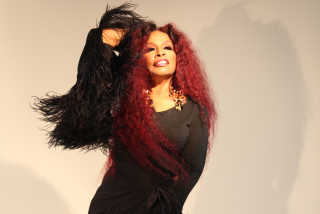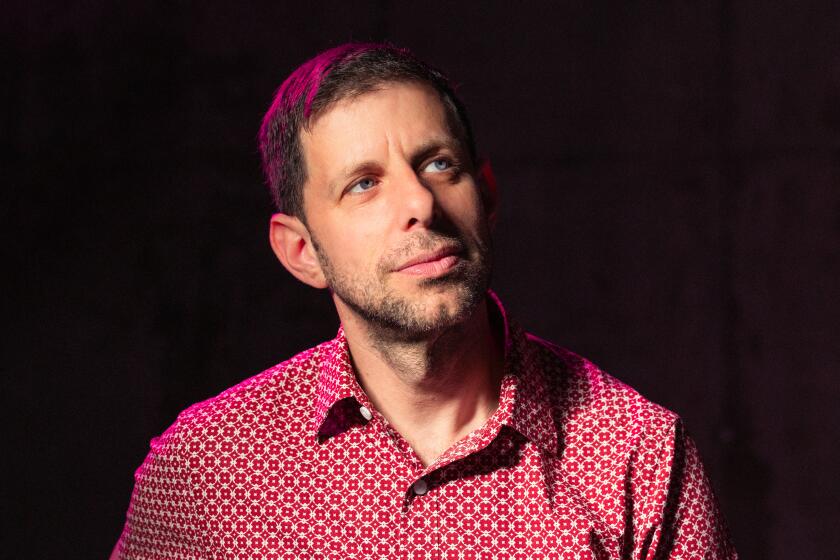Caught in the Social Whirl of Ring’s Shifting ‘Party Scene’
Melinda Ring likes to play with time and found material to make audiences inspect familiar life experiences that they usually overlook. In “Party Scene” at the L.A. Theatre Center on Friday, this locally based dancer-choreographer diced, duped and recombined the gestural signals people send and receive in social encounters, creating forceful, formal dance solos and ensembles from random, throwaway public behavior.
However, fragments of such vintage pop dances as the monkey and the funky chicken suggested that this 50-minute work for the C.O.L.A. (City of Los Angeles) fellowship series reflected observed reality less than backdated media sources--in the manner of Ring’s 1998 “Slow Dissolve: Meditation on the Film ‘Sudden Impact.’ ”
Certainly the giggly, gossipy women in the piece played like parodies of Hollywood cliches, and the sense of a grotesque, claustrophobic nightmare world conditioned by old films linked “Party Scene” to Michael Mizerany’s gay persecution fantasy “Necessary Depravity” on the C.O.L.A. series a week earlier.
Set in a chandeliered, white-on-white slice of a room, the piece began with a solo by Ring that introduced key motifs with great clarity and urgency. Next, an 11-member ensemble reiterated those motifs: the dance moves, the listening gestures (hand to chin), the chitchat, the laughing, the swivels on the floor that telegraphed shifts in attention.
Prime postmodern sequencing ploys sometimes unleashed all the motifs simultaneously, but also served them up in small-group unisons, in processions, in snapshot friezes and lots of slow motion. Expansive strides, jumps and rolling maneuvers enhanced the athleticism of the piece, while outbursts of mindless jabbering and la-di-da ballroom steps took the piece briefly into Pina Bausch’s style of social satire.
In counterpoint to the surging, increasingly compulsive group activity: an intense, slowly evolving pantomimed relationship in a corner upstage, the same corner where Ring eventually appeared to dance a brief coda to the piece.
Generic crowd noise accompanied much of the action (sometimes accented with ominous piano riffs), but Ring also incorporated works by composers as diverse as John Cage and Frederic Chopin, using “I’ve Got It Bad (And That Ain’t Good”) as the love theme for her mime duo.
If that duo embodied the deepest emotion in the piece, Ring made the party-goers look obsessive in their relentless socializing. Thus “Party Scene” served at once as an expose and a monument, commemorating a class of people who’ve found in the endless social whirl their only reason for being.
More to Read
The biggest entertainment stories
Get our big stories about Hollywood, film, television, music, arts, culture and more right in your inbox as soon as they publish.
You may occasionally receive promotional content from the Los Angeles Times.






